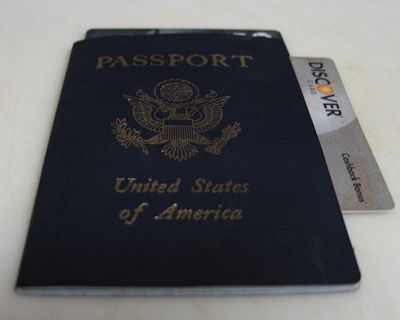
It’s something you don’t hear talked about regularly. One of those little surprises that the diligent and thorough will discover after returning from an international trip as they pore over their credit card statement.
Most travel blogs and credit card companies warn you about the importance of calling your credit card company immediately before an international trip to notify them that you’ll be out of the country and that it’s acceptable to approve international charges. What they usually don’t talk about is currency exchange fees, transaction fees, and international ATM fees – all of which add to the cost of travel.
In preparing for my upcoming trip I made a few calls and did a bit of research. What I have learned is that all banks have slightly different policies and approaches to international fees and the only way to truly know where you stand is to call and ask. Luckily, while some of the agents don’t have the rates memorized they can pull them up and let you know quickly and easily. Just call the service number listed on the back of your credit or debit card.
As I prepared to travel I dealt with my three providers: Citi Bank, Bank of America and Chase Bank. It’s interesting and perhaps important to note that none of the banks were willing to wave or negotiate the fees (and believe me I tried).
There are two different fee structures to be aware of. One for international Credit Card use. The other for international debit card/ATM use. These fees are especially obnoxious because you’re probably getting hit in 2-3 areas.
Debit Cards:
Chase told me that international use of their Visa debit cards came with a 3% currency exchange fee and a $3 ATM use fee. Then on top of that add on whatever ATM transaction fee the international bank chooses to charge for supporting an out of network bank. Unfortunately, I failed to confirm what the use fee was for retail transactions using the Chase Visa debit card. I believe they are at least 3%.
Bank of America was a bit more thorough in providing me with a breakdown of specifics. A Visa debit card through them results in a 1% currency exchange service fee. The gal I talked to failed to give me the specifics on their out of network ATM fee, which I assume is between $2-$4. She did note that the B of A fee is waved if you use one of their partner bank ATMs. Unfortunately there is no escaping the 1% conversation fee. Interestingly, she did note that they have 29,000 “Visa” ATMs and 19,000 “Plus” ATMs in Spain. If you use your debit card anywhere besides their ATM they charge a 3% currency exchange fee for retail transactions using the Vista debit card.
The only way you can get the ATM fee waved seems to be if you tie it to a rather large bank account. Definitely not an option most 20 somethings will be able to take advantage of, though it is a possibility for families or retirees looking at traveling. You might also be able to leverage a business account to get the fees waved.
Credit Cards
For convenience reasons when traveling in Europe, I prefer to use either Visa or MasterCard. Unfortunately, Discover isn’t accepted internationally, and AmEx seems to have significantly less coverage. I highly recommend researching what cards are most commonly accepted in the region of the world you’re planning to visit.
In calling, I found that both Bank of America and Chase set their Credit Card transaction fee at 3% on every transaction for their Visa cards. Contrary to some of the material I’ve read on the web, the 3% fee seemed to be fairly common across the banks I talked to when dealing with Visa cards. Again, despite raising a considerable fuss about the issue, neither bank was willing to adjust the rate.
I was able to confirm that B of A and Citi both place a 1% transaction fee on their MasterCard credit cards. While not positive, the way the B of A representative referred to the fee it’s set by MasterCard. Though it’s also probably subject to the individual credit card/bank contract.
My experiences seem to line up fairly well with the following survey done by IndexCreditCards.com which found:
How do the major credit card issuers stack up? Below are the international transaction fees from each issuer (for banks that issue Visa or MasterCard branded cards, these numbers include the Visa or MasterCard fees):
- Capital One: 0% transaction fee. (Capital One not only doesn’t impose its own fee, but it also eats the 1% fee that Visa or MasterCard impose.)
- Discover: 0% transaction fee
- American Express: 2% (Increasing to 2.7% January 1, 2009)
- Pulaski Bank: 2%
- Barclays/Juniper Bank: 2%-3%, depending on card
- Bank of America: 3%
- Chase: 3%
- Citibank: 3%
- GE Money 3%
- HSBC: 3%
- U.S. Bancorp (U.S. Bank): 3%
- Wells Fargo: 3%
I prefer using a debit card for cash withdrawals over currency exchangers or travelers checks, and a credit card for the lion’s share of my other purchases. For this trip I’ll use my 1% cash back MasterCard which – when the dust settles – should negate the 1% fee they’ll be charging on every purchase. A side note: Don’t assume that airline miles cards have better travel rates. From what I’ve seen they’re treated exactly the same as any other card…so as much as it may pain you, you might be better off leaving the Mileage card at home.
Tips, suggestions or additional ideas? Please share them in a comment form below. Was this post useful? I’d love your feedback.